
views
Ensuring the Roof Can Handle Plant Life

Consult with a structural engineer to ensure that the joist can handle the changed use for the roof. You must determine from the outset whether the added weight of the plants will be something the roof can withstand. You should also find out whether there are any council or municipal vegetative roof restrictions. With vegetation and full saturation, expect the roof to weigh another 20 pounds per square foot of additional weight.Build a Green Roof Step 1Bullet1 Version 2.jpg
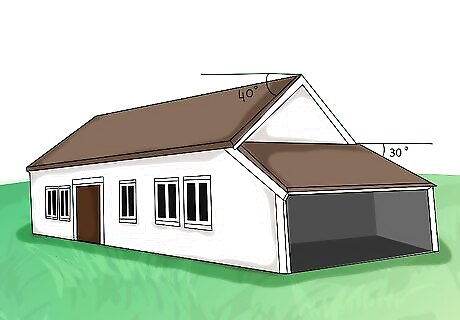
Check the slope. The roof will require an incline to ensure that water runs off naturally and doesn't water log the roof. In general, any roof with a slop of up to 40 degrees is safe to use (providing the previous step's restrictions have been observed.
Waterproofing the Roof

Choose a waterproof layer to go over the existing roof. This must be laid first and unless you're absolutely certain of what you're doing, it should be fitted by a professional roofer.
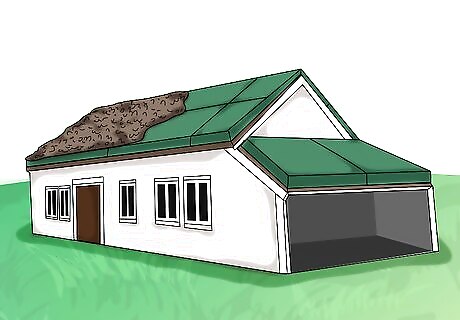
Add the water retaining and soil retention layer next. This also serves as a drainage layer. While the materials used will vary depending on your location, typical layers used include pumice, peat, clay, mulch (spray mulch), florist foam, polymers, etc. Ask the roofer for advice.
Adding the Plants

Choose drought tolerant plants suited to your locale. The hardier the plant, the less irrigation needed on your rooftop. Select plants that can tolerate extreme temperatures, and weather fluctuations experienced in a typical rooftop micro climate.Build a Green Roof Step 7Bullet1 Version 2.jpg
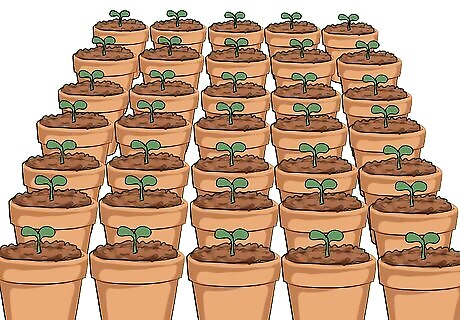
Buy plants in plug form from a local grower, to reduce upfront costs and increase even roof coverage. Reference a zone guide to ensure that the plants you select are locally hardy to the lowest expected minimum temperatures.
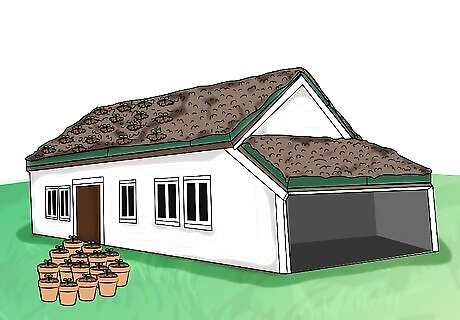
Add plants with a mind to good spacing. Rooftop plants are added in "plugs".
Keeping the Green Roof Watered
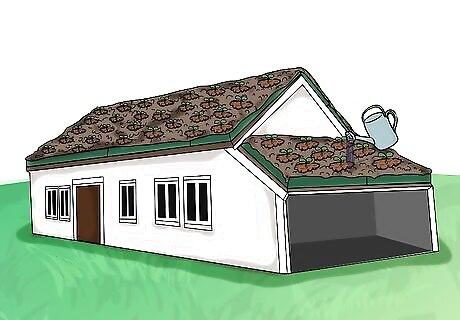
Water only if needed. Hopefully your heat-tolerant, drought resistant varieties won't clamor for water. While the plants are getting established on the rooftop though, they will probably need more water than for the remainder of their growing life. If it's raining, assume that's the watering done for you.Build a Green Roof Step 10Bullet1 Version 2.jpg
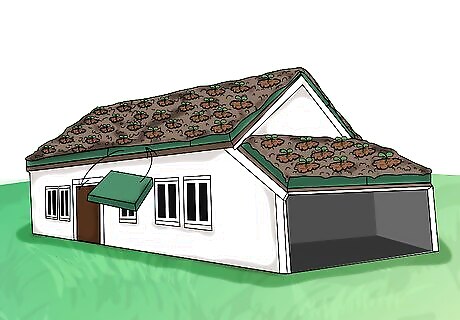
Keep a regular check on drainage. Check blockages quickly and mend them; any backup of water being unable to escape can result in roof landing inside your home.




















Comments
0 comment